A Japanese-built, 30-something year-old rescue vessel is probably one of the last things you would expect to find moored in the depths of Malta’s port facilities. In the Sea-Watch 3 however that is exactly what you would find. Climbing on board and looking around the ship soon brings one to the conclusion that this is a purposely-fitted rescue vessel; it has two sheltered decks, a fully stocked clinic and all the equipment needed to carry out a sea-rescue. However, the latter course of action is at the moment impossible. The vessel was in Malta for a re-fit, but ever since the MV Lifeline sailed into Malta last week, Sea-Watch 3 has not been allowed to leave its moorings.
‘They don’t want us out there’
The crew of the ship only got to know they were not allowed to leave when they were notified that a “review” was being held; however, no further explanation was given, said Alina Krobok, one of the media representatives of Sea-Watch, the German NGO that runs the vessel. For Krobok, the reason for their being held in port is obvious; politics. “They don’t want us out there”, she said.
Krobok explained that the Sea-Watch 3 is listed on the Dutch Royal Register and is hence fully entitled to sail under the Dutch flag, eliminating any controversy related to its registration. Due to this, Krobok said, there are “no legal grounds for us to be trapped here”, but with Matteo Salvini in Italy and the European Union in general “not really supporting Malta in their work, we are pretty sure that there are political reasons why we are not allowed to leave”.
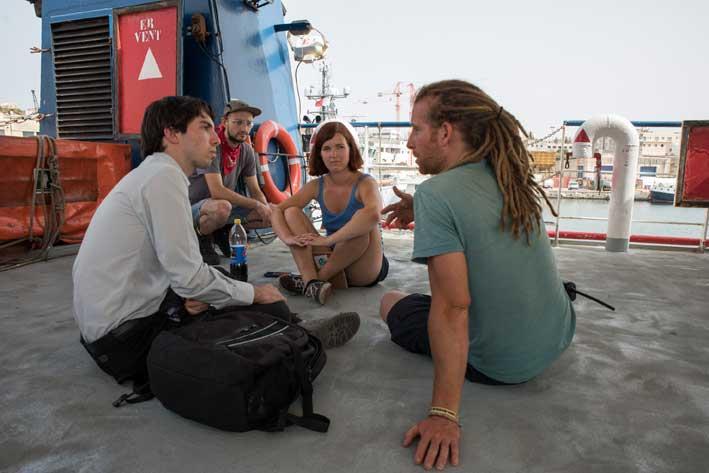
With the vessel stuck in Malta, it obviously means that they cannot conduct sea-rescue operations. When they are out in the open seas however, crew member Kim Heaton-Heather said, they would normally be notified of a distress message by MRCC Rome, which is the official Maritime Rescue Co-ordination Centre for the area. The information relayed would include the number of people onboard, the type of boat and of course its position. With that information, the crew can decide whether it makes sense for them to conduct a rescue, at which point they will be directed by the authorities at MRCC to the boat.
Around five nautical miles away from the distress signal, Sea-Watch 3 will launch its two RHIBs, rigid-hulled inflatable boats. If they are advised that the situation is critical, maybe that the distressed boat is breaking up, and then the RHIBs will be launched earlier – maybe 10 to 12 miles before. Once the rescue boats arrive at the scene, they make an initial assessment of the area and of the boat itself and relay more detailed information back to the main vessel. When the main vessel arrives, life jackets are handed out and the evacuation will begin, starting with women and children. However, these boats are so overcrowded that it is difficult to always stick to this rule as the men mostly stay around the edges of the boat as that is the most dangerous place to be.
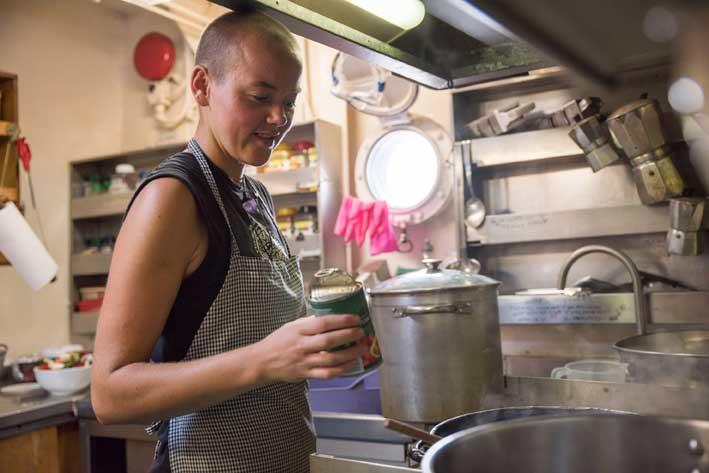
Libyans rounded up 35 people, closed them in a shipping container and set it on fire
One of the biggest points of controversy surrounding this issue is the belief that most of these arrivals are economic migrants. Asked whether they think this is the case, both Krobok and Heather-Jones disagreed. “At present, one out of 10 is dying trying to cross the Mediterranean, and they are taking their children with them. Nobody would do that if they think that they have a better chance than where they are at this moment in time”, Krobok said. She also spoke about the boats themselves; there is one in Germany for exhibition purposes and one time when German parliamentarians visited and climbed on board, some did not even last 10 seconds on it – let alone the number of days that these immigrants spend on it.
Heather-Jones said that in his experience during seven missions, he only remembers three people who seemed a bit suspect; three women from Morocco “who looked very rich”, but again he did not know their story; “maybe they have a personal story which puts them in danger in their country”. As for the rest, he does not think so. Most nowadays, come from Eritrea or Syria or even Libya itself; indeed the one thing that Heather-Jones finds of particular interest is that all of them want to escape from Libya.

What do these migrants say once they are rescued? Initially, Heather-Jones said, they are all extremely thankful; but as the days pass, they begin to open up to their rescuers. Indeed, the stories he’s heard from these migrants, and the hardships they go through are enough to convince him that they are not leaving Libya for purely economic reasons.
Asked if there were stories that stood out, Heather-Jones instantly recalled the story of a specific migrant, who said that at one point at the detention centre he was in, the Libyan military rounded up around 35 people and closed them all into a shipping container which was then set on fire. Any escapees were gunned down, engulfed in flames. Another gruesome story also focuses on one of these detention centres, with one migrant describing how when somebody died, the Libyan guards would leave the body inside the hut – with the rest of the occupants still living there – until the stench was unbearable, at which point the occupants are forced to take the decomposing corpse of their friend out into the desert and bury him.
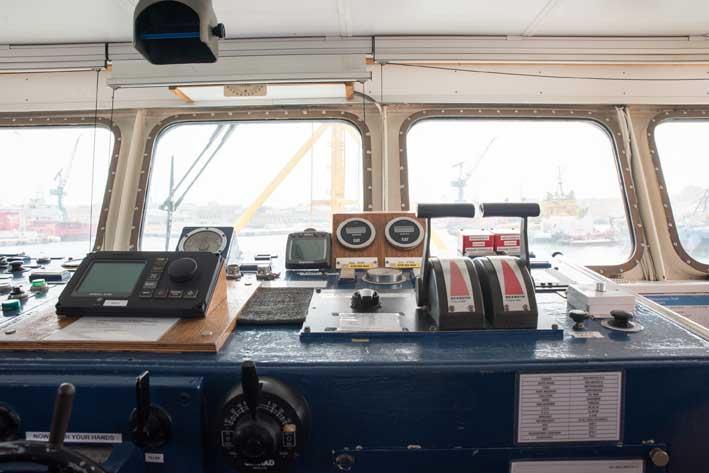
There are many other “less horrific sounding stories” involving sexual violence against women and of people simply being killed. One migrant he met on a mission had his brother shot in the head next to him for no apparent reason. “It’s an insane story but it’s maybe not a gruesome as you might hear in other stories, but it’s this idea that human life is worth so little in that country; it’s just taken away like that,” Heather-Jones lamented.
The situation is so bad in Libya nowadays that when refugees see the Libyan coastguard coming they jump in the water and try to kill themselves. That option is preferable to returning to Libya, Heather-Jones said. The trip is “not something you’re just going on lightly; you’re not going to just say ‘yeah there’s better wages in Europe’”; the dangers are very real and the risks are huge.

‘Libyan coastguard is there not to rescue people but to bring them back to Libya’
Speaking about the Libyan coastguard, both Krobok and Paul Lowis Wagner, another member of the NGO’s media team, believe that they do more harm than good to the situation. In the past, Libyan waters were policed by the Italian coastguard because were no rescue assets present, but Krobok stated that even now there still are none, “because the Libyan coastguard is there not to rescue people but to bring them back to Libya”.
The follow-up to this implication is clear; are the Libyan coastguards colluding with human traffickers? According to both Krobok and Wagner; they are. “First they pull back and let the people pay money, and then they can pull back and let them pay again,” says Wagner. It’s a cycle that is in place simply to extract more money out of immigrants.
This is a worrying accusation; especially when one remembers that not only is the Libyan coastguard trained by Malta and Italy – it is also funded by the European Union. The problem here lies in the fact that nobody is checking what the coastguards are doing after they have been trained, Krobok says. Nobody is present to see that the Libyan coastguard are unequipped – Krobok tells us they do not have RHIBs or even life-jackets – and their interventions only serve to panic and even kill people. Krobok recounts an episode where the Libyan boats where running over and hence drowning immigrants, a situation so bad that even the Italian coastguard helicopter was urging the Libyans to stop.
Libya itself is not a signatory of the Geneva Convention for Refugees and it does not follow any international laws, Krobok tells us. They do not take part in rescues – but in pullbacks, only to send those pulled back into detention centres to be sold into slavery, she says. Once again, she emphasised that no authorities are checking to see whether the Libyans are actually following their training, or even what is happening in Libya. The UNHCR for instance, she explains, only has access to 20 per cent of the Libyan detention centres – and even then access is restricted. “They don’t know what happens to these people, and they don’t know what the Libyan coastguard does,” Krobok exclaims.
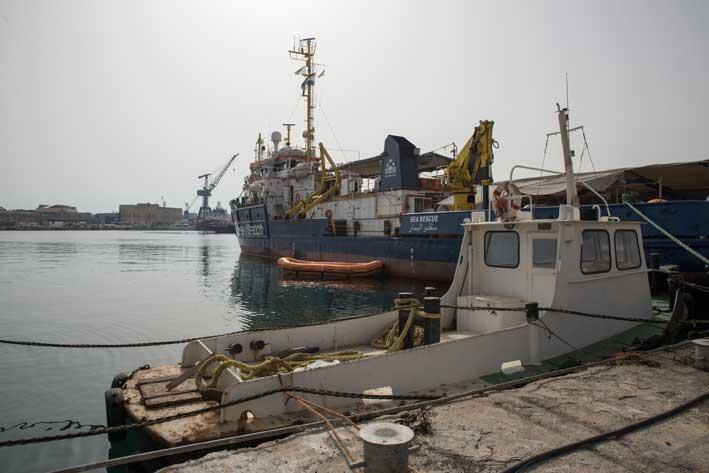
‘Nobody is asking the European Union why they are letting people die’
There have also however been many questions raised regarding NGOs like Sea-Watch – especially after the Lifeline controversy in recent days.
One such concern is related to the funding of the organisation. Asked about this, Krobok said that they were funded only by donations. The NGO was set up in 2015 at a time when the migration was at its zenith, and hence “it was pretty easy to raise funds”. Now, the NGO focuses on media work to raise awareness as well as fund-raising events in their native Germany to finance their operations. As for the crew of the ship, all of them have day jobs. Indeed, running through the members of the multi-national crew, one finds engineers, doctors, paramedics and even one member who works in robotics. Each one uses their vacation leave to be on the ship to take part in the NGOs rescue missions.
The main perception however when it comes to NGOs like Sea-Watch is that they are acting like ‘human smugglers’ themselves, facilitating an ‘invasion’ of Europe and, more so, going against international laws by doing so. Asked whether such implications and accusations hold water, Krobok put it very simply; “it’s a witch hunt”.
Even taking the Lifeline case, she found it worrying that politics and law have united: “It’s actually really dangerous from a democratic perspective”. Either way however, there is no proof whatsoever that they have broken any laws and that is because there isn’t any to be found, both Krobok and Wagner tell us – and if there was, both are sure that action would be taken against them at the first opportunity. Yet this has not occurred, they tell us.
Wagner goes one step further; “even the fact that you are asking this question is absurd”. Krobok chimes in, saying that while they are asked these questions repeatedly, and each time they prove that they have done nothing wrong, “nobody is asking the European Union why they are letting people die, they’re actually part of killing them by telling us not to help." And they are paying people who are like crazy criminals with boats. But nobody is asking ‘what’s going on’.” Wagner added.
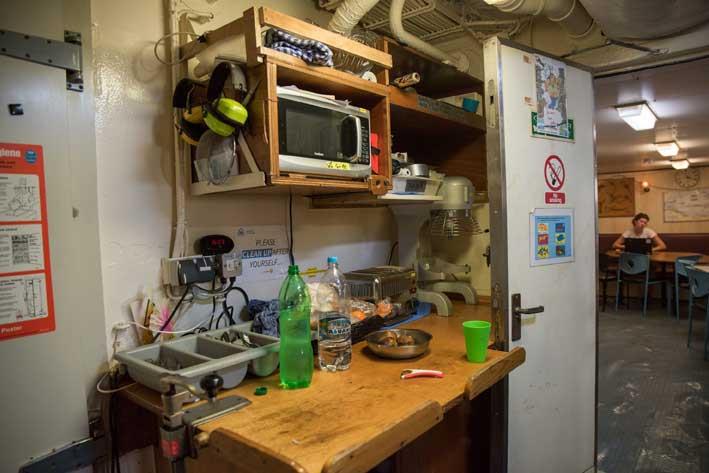
‘We need a European solution’
Asked what their appeal to the European people and politicians would be, Krobok was adamant that a “European solution” which takes the burden off countries like Malta and Italy and creates a system to distribute asylum seekers to other countries is needed. She also urged European leaders to “stop playing political power games on the back of the most vulnerable”.
Wagner echoed his colleague’s sentiments, saying that he hoped European governments would be “more courageous” and show more solidarity to their fellow countries, helping to share the burden with those who are near the sea and hence on the frontline of this migration issue.
Sea-Watch 3 remains locked in Maltese ports, not allowed to leave and continue its humanitarian work. As a result, more and more people are dying in the Mediterranean, Krobok tells us. She raises one final analogy; “Nobody would tell a volunteer from the fire brigade that they are not allowed to extinguish a fire just because they are volunteers right?”